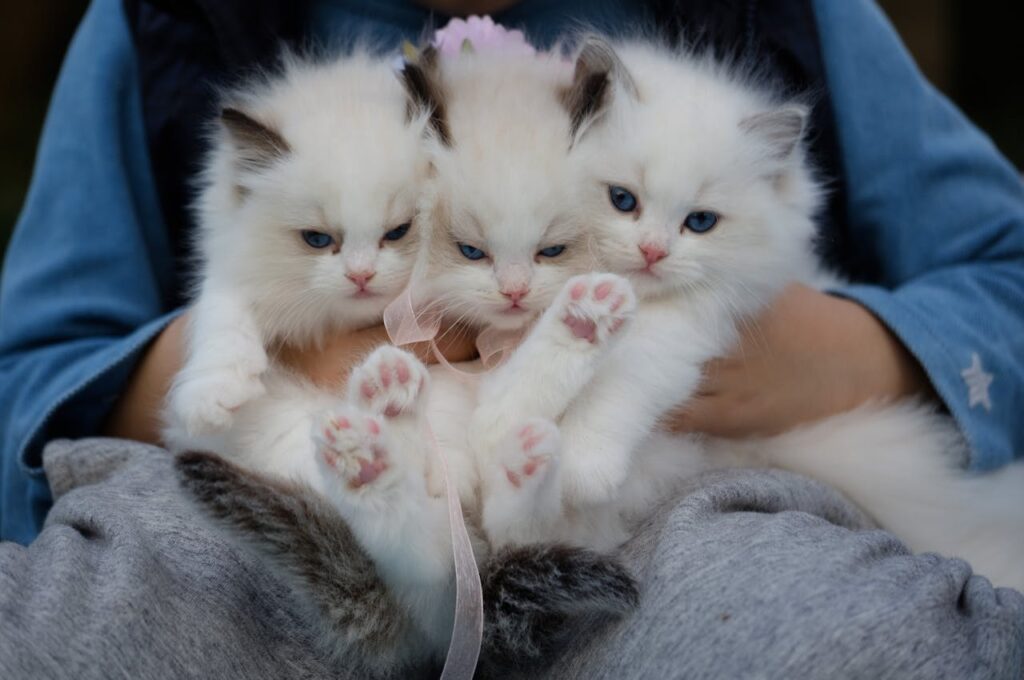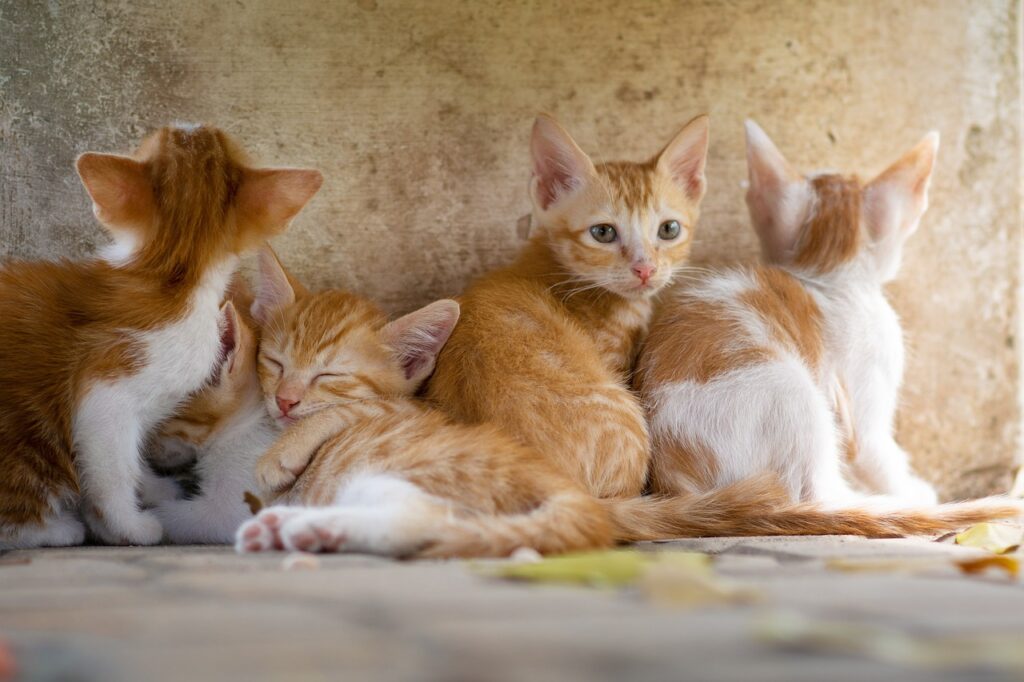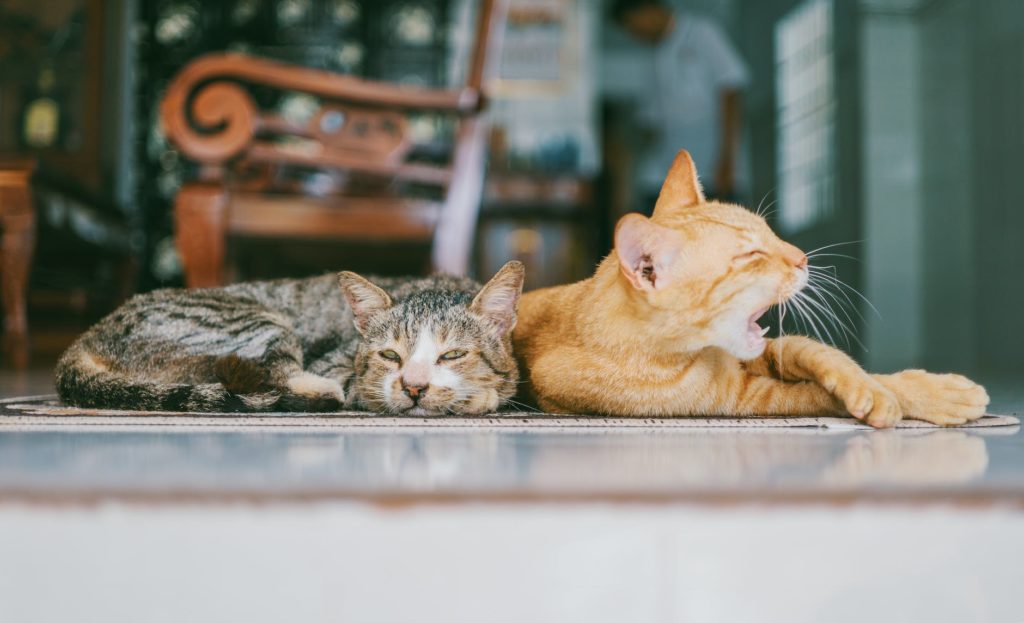Best Friend for Your Kitty
Are you thinking about getting a second cat to keep your current feline friend company? While having multiple cats can be rewarding and provide endless entertainment, it’s important to choose the right companion for your existing kitty. The introduction of a new cat can be a significant change for your household, and it’s crucial to approach this transition thoughtfully to ensure a harmonious relationship between your pets. Here are some detailed tips for choosing the best friend for your cat.
Live Pee Free! Odor Eliminator 100% Eliminates Pet Odor on Contact. 20% Off. No Enzymes, No Fragrance, No Detergent, No Bleach – Safe for Kids and Pets.Table of Contents
How to Choose the Ultimate Best Friend for Your Kitty
Finding the ultimate companion for your furry friend can be a thrilling yet challenging task. Cats are known for their independent nature, but they also appreciate companionship. When considering the best friend for your kitty, you must take several factors into account to ensure a harmonious relationship. This guide will help you navigate the world of feline friendships, offering tips to choose the perfect companion for your beloved pet.
1. Understand Your Cat’s Personality
Before you embark on the journey to find a best friend for your kitty, it’s essential to understand your cat’s personality. Each cat has its own unique traits, whether they are shy, outgoing, playful, or laid-back. Take some time to observe your kitty. Does she bask in the warmth of others or prefer solitude? Understanding her social needs will help you choose a feline companion that complements her personality.
Moreover, consider her energy levels. A lively kitten might not mesh well with a senior kitty who prefers to nap all day. Instead, look for a partner that matches her pace. Best Friend for Your Kitty. Assessing these personality traits will allow you to make an informed decision, ultimately leading to a more harmonious and enjoyable relationship for both cats.
2. Consider the Age Difference
Age plays a pivotal role in the dynamics of a cat friendship. Introduce a kitten to an adult cat, and the exuberant energy of the young one can either excite or overwhelm the older cat. Conversely, two young cats might engage in rambunctious play that can lead to minor skirmishes. Thus, it’s vital to find an age pair that will get along well.
When you are selecting a best friend for your kitty, think about her current stage in life. If your cat is mature and prefers a calmer environment, consider adopting a similar-aged cat or even a slightly older one. On the other hand, if your kitty enjoys playful antics and has the stamina for it, a younger cat could provide the entertainment she craves.
3. Evaluate Breed Compatibility
Different cat breeds exhibit varying temperaments and play styles, affecting their compatibility. For instance, Siamese and Abyssinian cats are known for their social nature and love to engage in interactive play. Best Friend for Your Kitty. If you have a more introverted or reserved breed, such as a British Shorthair, you might want to consider a partner that matches that disposition to enhance compatibility.
Additionally, take the time to research the specific characteristics of the breed you are considering. Certain breeds may have traits that can either harmonize or clash with your cat’s personality. You should evaluate the potential friend’s temperament, energy level, and play style. Achieving a compatible blend will significantly enhance the chances of a successful friendship.
4. Assess Your Home Environment
Your living situation heavily influences the type of feline companion you can introduce to your kitty. For instance, if you live in a small apartment, a more territorial breed might not be ideal as they could feel cramped. Best Friend for Your Kitty. Similarly, homes with multiple levels can provide more space for energetic cats to romp around and explore.
Beyond space considerations, think about what you’ve provided for your current cat. Does she have plenty of hiding spots, scratching surfaces, and perches to observe her environment? Best Friend for Your Kitty. Creating a cat-friendly home will give her a sense of safety and security as you introduce a new friend. By ensuring your environment is conducive to feline companionship, you set the stage for a successful introduction and lasting friendship.
5. Choose the Right Time for Introduction
Timing is critical in establishing a friendship between two cats. Introducing a new feline friend during a period of stress, such as moving to a new home or during significant changes in the household, can negatively impact the process. Best Friend for Your Kitty. Instead, choose a calm and serene time to make the introduction, allowing both cats to adjust without added pressure.
Consider a gradual introduction approach to foster positive experiences. Start by allowing the cats to become accustomed to each other’s scent through shared items like blankets or toys. If they seem curious about one another, you can then proceed to visual encounters through a cracked door or a baby gate. This slow introduction can pave the way for a happier interaction when they finally meet face-to-face.
6. Incorporate Scent Familiarization
Scent is incredibly important in the feline world. Cats possess a keen sense of smell, and they use it to communicate and understand their environment. Best Friend for Your Kitty. Before introducing your current kitty to her new friend, use scent familiarization to help ease the transition. Begin this process well before the actual meeting.
Start by swapping bedding or toys between the two cats. This allows them to become accustomed to each other’s scent in a low-pressure situation. You can also gently rub a cloth on one cat and then on the other to share scents directly. Best Friend for Your Kitty. This technique helps them recognize and accept each other’s presence, laying a solid foundation for a friendly relationship.
7. Monitor Their Behavior
Once the cats are finally introduced, careful monitoring of their behavior is crucial. Every interaction can provide valuable insight into how they are adjusting to one another. Best Friend for Your Kitty. Be vigilant about any signs of aggression or stress. Hissing, growling, or hiding can indicate that the transition isn’t going as smoothly as planned.
Positive behaviors to look for are playful interactions, mutual grooming, or even synchronized napping. These signs show that they are becoming comfortable with one another. Best Friend for Your Kitty. However, it is essential to remain patient during this process, as some cats may take longer than others to warm up. Continue to guide them through the introduction phase, and don’t hesitate to intervene if you sense tension.
8. Create Separate Spaces
While a best friend for your kitty is desirable, ensuring that both cats have their own territory is equally important. Cats, by nature, can be territorial creatures. Providing separate spaces allows each cat to retreat and feel secure whenever needed. Best Friend for Your Kitty. This practice will ultimately reduce any conflicts and ensure that both feline friends can coexist peacefully.
Consider setting up distinct sleeping areas, play stations, and feeding zones. Best Friend for Your Kitty. This arrangement not only minimizes competition but also encourages them to establish their own identities within the home. Over time, as they feel more secure, you may notice them gravitating toward shared spaces and engaging in friendly activities together.
9. Encourage Positive Interactions
Actively encouraging positive interactions between the two cats can help solidify their friendship. Use toys, treats, and shared playtime as tools to promote bonding. Best Friend for Your Kitty. Engaging both cats in interactive games can not only stimulate them physically but also strengthen their social connection.
For instance, use feather wands or laser pointers during playtime. These activities create a shared experience, making it easier for both cats to associate positive emotions with each other’s presence. Additionally, rewarding positive behaviors with treats reinforces their friendly interactions. Best Friend for Your Kitty. Celebrate their successes – every time they play together or share space – and provide positive reinforcement, ensuring that the friendship blossoms.
10. Be Patient and Understanding
Finally, it’s vital to practice patience and understanding throughout this entire process. Not every cat will become instant friends, and some may require more time than others. Best Friend for Your Kitty. Recognizing that every relationship develops at its unique pace can alleviate pressure and stress from both you and your cats.
Take note of their interactions while being prepared to make adjustments if necessary. Should you observe signs of distress, consider separating them temporarily and allowing them more time to acclimate. Your ability to provide a supportive environment will significantly contribute to the success of their friendship. Best Friend for Your Kitty. Ultimately, the goal is to nurture a bond that enhances both of your cats’ lives and creates a loving household.
In conclusion, choosing the best friend for your kitty is an exciting venture, filled with consideration and care. By taking into account personality traits, age, breed compatibility, and individual environments, you can set the stage for a successful pairing. Best Friend for Your Kitty. Remember, patience and gradual introductions are necessary elements in cultivating a meaningful feline friendship. By actively encouraging positive interactions and providing each cat with their own space, you can pave the way for a satisfying and joyful companionship.
Both you and your kitty will thrive with the right selections and thoughtful approach, ensuring that your household is filled with love, laughter, and the delightful antics of happy, well-adjusted cats.

Consider their personality
Just like people, cats have unique personalities, and not all cats get along. Before bringing a new cat into your home, consider your current cat’s personality. Is she outgoing and playful, or more reserved and independent? Best Friend for Your Kitty. Does she get along well with other cats, or does she prefer to be the only feline in the house? Understanding these aspects can help you choose a second cat with a personality that complements your current kitty.
For instance, if your current cat is very playful and enjoys social interactions, you might want to find a similarly energetic and sociable companion. Best Friend for Your Kitty. On the other hand, if your cat is more laid-back and enjoys solitude, a calm and quiet cat might be a better match. Observing your cat’s behavior in different situations can give you valuable insights into what type of companion would be most suitable.
Age matters
When choosing a second cat, it’s important to consider their age. Generally, kittens have more energy and require more attention than older cats. If your current cat is older, it may be best to choose a mature cat as a companion. Older cats tend to have similar energy levels and may be more compatible in terms of play and rest routines.
Conversely, if your current cat is still young and playful, a kitten may be the perfect addition to your household. Young cats and kittens can engage in play together, which can provide physical and mental stimulation for both. Best Friend for Your Kitty. However, it’s essential to be prepared for the extra care, supervision, and training that a kitten requires. Introducing a kitten to an older cat can sometimes be challenging, as older cats may have less patience for the boundless energy and curiosity of a kitten.

Introduce them slowly
Introducing a new cat to your current cat can be a delicate process. It’s important to introduce them slowly and at their own pace to avoid causing stress and anxiety. Start by keeping the new cat in a separate room, allowing your current cat to sniff around the door and become familiar with the new cat’s scent. Best Friend for Your Kitty. This initial phase helps your current cat get used to the idea of another cat in the house without direct contact.
Gradually increase their exposure to each other over a period of several days or even weeks. Use a baby gate or a cracked door to allow them to see each other without direct contact. Swap bedding between the cats to help them get used to each other’s scent. Best Friend for Your Kitty. Supervised face-to-face meetings should be brief at first and gradually lengthened as they become more comfortable. Patience is key during this process; rushing the introduction can lead to tension and conflict.
Consider gender
Gender can play a role in how well two cats get along. Best Friend for Your Kitty. Generally, male cats are more accepting of new cats than females, but this isn’t always the case. It’s important to consider your current cat’s gender and choose a companion of the opposite gender if possible, to reduce the risk of conflict. However, the individual personalities and socialization experiences of the cats are more crucial factors than gender alone.
Some cats may have strong preferences or aversions regardless of gender, so observe your cat’s behavior and interactions with other cats if possible. Best Friend for Your Kitty. For example, if your current cat has had positive experiences with male cats in the past, another male cat might be a good match. If your cat has shown aggression or fear toward certain genders, take that into account when selecting a new companion.
Provide separate resources
When bringing a new cat into your home, it’s important to provide separate resources such as food and water bowls, litter boxes, and sleeping areas. This can help reduce competition and minimize the risk of conflict between the cats. Best Friend for Your Kitty. Cats are territorial animals, and having their own resources can make them feel more secure and less threatened by the presence of another cat.
Ideally, there should be one litter box per cat, plus one extra, to ensure that each cat has access to a clean box. Separate feeding areas can prevent food-related aggression, and multiple sleeping spots can give each cat a choice of comfortable resting places. Best Friend for Your Kitty. Additionally, providing plenty of vertical space, such as cat trees and shelves, can give your cats more territory to explore and help them feel more secure.
Monitor and Adjust
After the initial introduction period, closely monitor the interactions between your cats. Look for signs of stress or aggression, such as hissing, growling, swatting, or hiding. It’s normal for cats to take some time to adjust to each other, but persistent aggression or fear may require intervention.
If you notice ongoing issues, consider consulting with a veterinarian or a cat behavior specialist. Best Friend for Your Kitty. They can provide guidance on how to address conflicts and help your cats learn to coexist peacefully. Sometimes, small adjustments in the environment or routine can make a big difference in reducing tension. For example, increasing playtime and providing more enrichment activities can help redirect your cats’ energy and reduce stress.
Fostering First
If you’re unsure about committing to a second cat, consider fostering before adopting. Fostering allows you to see how your current cat reacts to having another cat in the house without a long-term commitment. It also provides a temporary home for a cat in need.
During the foster period, observe how the cats interact and whether they show signs of compatibility. If the foster arrangement works well, you may decide to adopt the foster cat permanently. If not, you’ll have gained valuable insights into what kind of companion might be better suited for your current cat. Fostering can also give you a better understanding of the dynamics between cats and help you make a more informed decision.
Creating a Cat-Friendly Environment
In addition to choosing the right companion, creating a cat-friendly environment can help ease the transition and improve the quality of life for both cats. Ensure that your home has plenty of vertical space, such as cat trees and shelves, where cats can climb and observe their surroundings. Vertical space is essential for cats to feel secure and exercise their natural climbing instincts.
Provide a variety of toys and enrichment activities to keep both cats mentally stimulated. Interactive toys, puzzle feeders, and regular playtime can prevent boredom and reduce the likelihood of behavioral issues. Additionally, create hiding spots and quiet areas where each cat can retreat and feel safe when needed.
Regular Veterinary Care
Regular veterinary care is essential for both your current cat and the new addition. Before bringing a new cat home, ensure they have a clean bill of health to prevent the spread of illnesses or parasites. Schedule a veterinary check-up for the new cat and keep up with vaccinations, flea and tick prevention, and other necessary medical care.
Regular health checks can also help you monitor for any signs of stress or health issues that might arise from the introduction of a new cat. Stress can sometimes manifest as physical symptoms, so staying on top of veterinary care can help you catch and address any problems early.

Conclusion
Choosing the right companion for your current cat requires careful consideration of their personality, age, gender, and a slow introduction process. By taking these factors into account and providing separate resources, you can help ensure a smooth transition and a happy home for your furry friends. A well-matched pair of cats can provide companionship, mental stimulation, and endless entertainment for each other.
If you’re considering adding a second cat to your household and want more information on how to choose the best companion for your current cat, be sure to consult with your veterinarian or a cat behavior specialist. They can offer personalized advice and support to help you make the best decision for your feline family. By being attentive to your cats’ needs and preferences, you can create a harmonious and joyful environment for both you and your beloved pets.
Expanding your feline family can be a wonderful experience that enriches the lives of both your current cat and the new addition. With thoughtful planning, patience, and the right resources, you can create a loving and peaceful multi-cat household.



